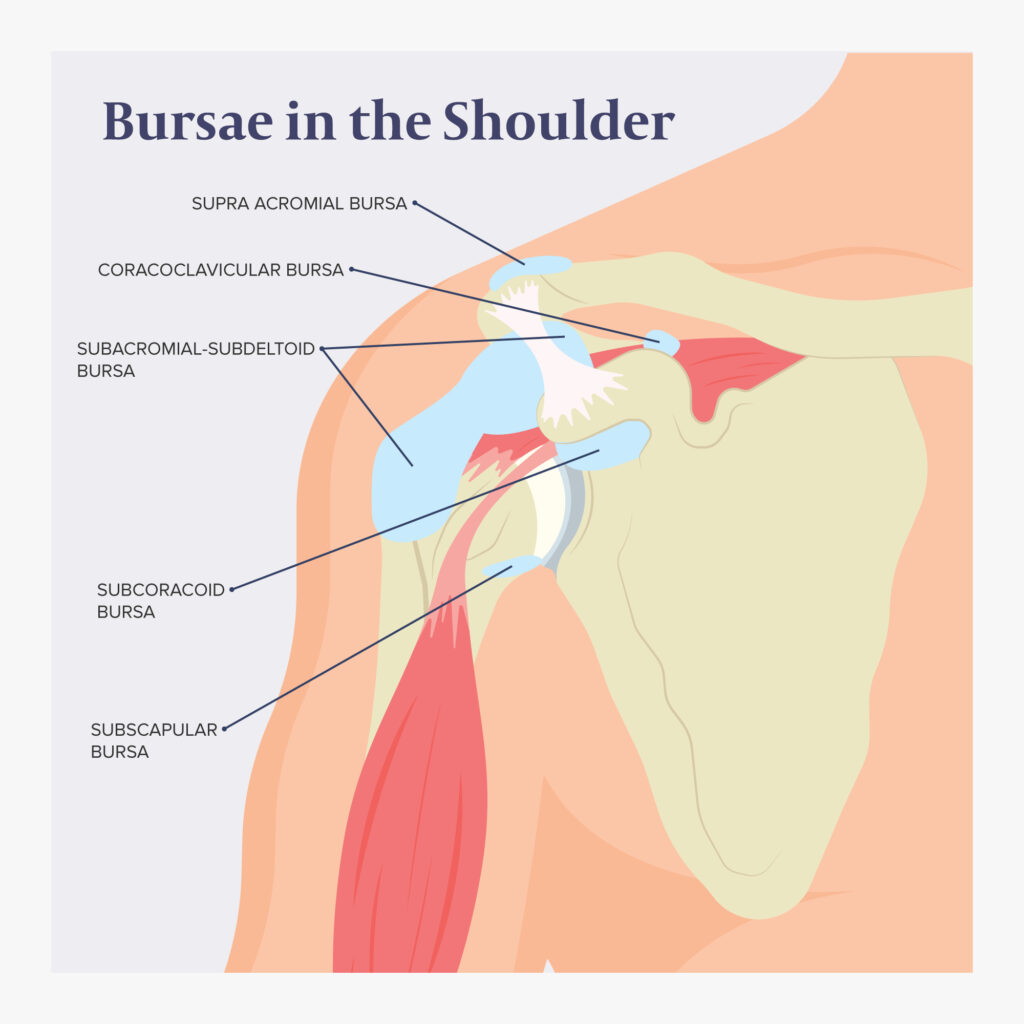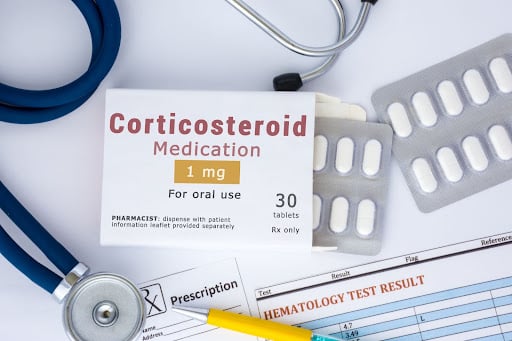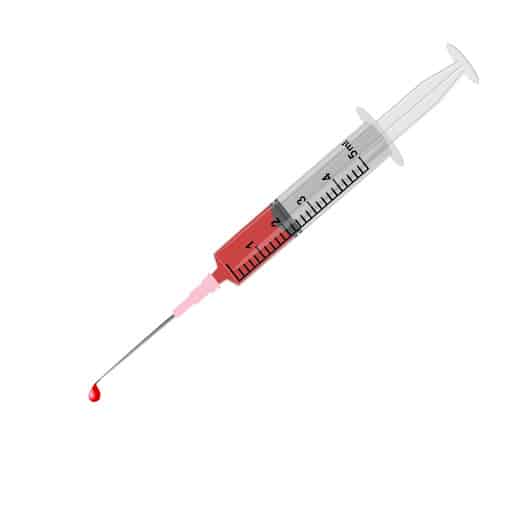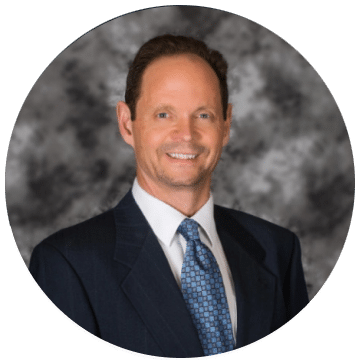Information For Patients About Shoulder Bursitis Treatment Options
Am I a Candidate?Shoulder bursitis is a painful medical condition characterized by discomfort and restrtiction in range in the shoulder. It is caused by inflammation, injury or infection of one or more fluid filled sacs within the shoulder known as bursae which allows muscles and tendons to slide smoothly over bony surfaces.
However, there are many treatment options for shoulder bursitis. This is an overview of the various treatment options available for bursitis in the shoulder. This post reviews the different types of shoulder bursitis, common causes, symptoms,and treatment options.
An Overview Of Shoulder Bursitis
Bursae are small pillow-like structures that are present between the bony areas of the joint.
Bursae are small fluid filled sacs within the joint that allow muscles and tendons to slide smoothly over bony surfaces. They act as cusions or shock absorbers, reducing friction and allowing smooth movement of muscles and tendons as they cross bony surfaces.
Bursae contain synovial fluid which provides lubrication to facititate frictionless motion. There are multiple bursae throughout the body.
There are five main bursae in the shoulder joint:
- Subacromial-subdeltoid (SASD) bursa,
- Subscapular bursa,
- Subcoracoid bursa,
- Coracoclavicular bursa
- Supra-acromial bursa.

Injury, inflammation, or infection of a shoulder bursae can limit shoulder function and range of motion. Why? The tendons and muscles are no longer able to smoothly slide within the joint and soon become irritated. Tendon irritation in turn can lead to pain, muscle guarding and reduced range of motion.
Types of Shoulder Bursitis
There are four major types of shoulder bursitis:
Traumatic Bursitis: Typically associated with a specific injury or trauma to the shoulder.such as a fall or accident. It can cause significant pain, swelling and restriction in range of motion.
Chronic Bursitis: Characterized by long-term or recurring inflammation of the shoulder bursae. It is typically associated with repetitive overuse such a repetitive overhead motions or prolonged periods of pressure on the shoulder.
Infectious Bursitis: sometimes bacteria can infect the bursae leading to infectious bursitis. This can occur following a penetrating injury or due to spread of infection from another nearby area. It can cause pain, redness, warmth and possible fever.
Calcific Bursitis: In this type of bursitis, calcium deposits form within the bursae leading to inflammation, pain, and restriction in range of motion.
Common Causes Of Shoulder Bursitis
The most common causes of bursitis include:
Lifting Heavy Objects

Lifting heavy objects repetitively or without proper technique can compress the small structures in the shoulder, including the bursae. This is commonly seen in people whose occupations involve repetitive lifting tasks every day.
Without adequate rest, the bursae is susceptible to inflammation and injury. Overtime, repeated heavy lifting can lead to both traumatic and chronic bursitis.
Overuse From Repetitive Shoulder Movements

People who perform repetitive shoulder motions, such as basketball players, swimmers, and other sportspersons, are prone to shoulder injuries, including bursitis. Repetitive movements can cause microtrauma injuries to the bursa and overlying tendons, which can lead to chronic shoulder bursitis.
Injuries
Car accidents and falls can cause damage to the shoulder and bursae leading to traumatic bursitis. Trauma can also cause open wounds which can become infected leading to infective bursitis.
Symptoms Of Shoulder Bursitis
The symptoms of shoulder bursitismay vary based on the extent of the injury, type of bursitis and underlying medical and surgical history. Some people may experience just one or two of these symptoms, while others may experience all of them.
Additionally, the symptoms may only be mild in the early stages, however this may progress over time if the bursitis is left untreated.
The following are some of the common symptoms of shoulder bursitis:
Pain From Lifting Weights

Anything that puts strain on the shoulder joint and the muscles that elevate the scapula and humerus, such as lifting weights, can cause bursitis related shoulder pain.
Even if you simply pick up a child or a few shopping bags, you may notice pain in the shoulder. This is due to the inflammation and irritation of the injured bursa and associated tendons.
Stiffness Or Swelling
Shoulder bursitis commonly causes shoulder stiffness. The muscles overlying the bursa may become restricted due to muscle guarding or pain. Additionally, if the bursa is infected or injured from trauma, there may be swelling in the shoulder joint which further restricts movement and makes the joint stiff.
Painful Shoulder Mobility
Shoulder bursitis often causes extensive pain during shoulder movements. Simply elevating, abducting, rotating, or depressing the scapula and arm can cause pain as the injured bursa is stretched or compressed during the movement.
Sleep Disruption Caused By Pain
Pain and stiffness in the shoulder joint can disrupt sleep. As the pain from the shoulder bursitis can range from mild to severe, it is sometimes enough to prevent sleep. For this reason, people tend to sleep on their unaffected side so that there is less pressure on the bursa.
Sharp Or Pinching Pain With Overhead Shoulder Motions
Overhead motion can also cause shooting pain or pain that radiates down the arm. This is typically due to nerve irritation or referred pain. Nerve irritation can lead to numbness, tingling and shooting pain down the arm.
How Long Does Shoulder Bursitis Last?

Mild cases of shoulder bursitis can heal in several weeks. If you rest the joint and stop any aggravating factors like overhead movements and lifting heavy objects, healing is usually faster. You can also add conservative shoulder bursitis treatments to promote a faster recovery.
However, the healing also depends on what has caused the bursitis. If there is a history of trauma or infection, or if it is not treated properly, the bursitis may become chronic and require additional time to heal.
Patients over the age of 60 typically have poorer outcomes and take longer to heal (1).
Will Shoulder Bursitis Go Away On Its Own?
For the most part, chronic and traumatic shoulder bursitis will go away on its own with conservative treatment and rest. This is especially true in mild cases of shoulder bursitis. Conservative measures include ice therapy, pain medication, and compression sleeves. Bursitis is a self-limiting condition, but if it gets worse it needs to be seen by a doctor.
Mild cases of traumatic and chronic shoulder bursitis typically will heal after conservative treatment and rest. Conservative treatments include ice, anti-inflammatory medications, physical therapy and rest. If shoulder bursitis fails to respond to conservative treatments, a physician should be consulted.
How Treatment For Shoulder Bursitis Is Determined By The Diagnosis

Treatment options vary from patient to patient and depend upon the type of bursitis and the its severity. For example, treatment for infected bursitis is very different from that of traumatic bursitis or chronic bursitis.
To obtain an accurate diagnosis, doctors perform the following:
- Medical History: Document onset of pain, presence or absence of trauma, aggravating and alleviating factors, medical and surgical history.
- Physical Examination: Range of motion, areas of tenderness or redness are evaluated and documented.
- Laboratory Tests: if infection is suspected, lab tests are often ordered to include a CBC and white count.
- Imaging: x-ray, in office ultrasound and MRI are often utilized. A bursa is a soft tissue structure and is not visible on x-ray. In one study, MRI-demonstrated increased bursal thickness in patients with bursitis. (2)
It’s therefore very important that shoulder bursitis is diagnosed correctly to ensure the appropriate treatment.
Self-Care: Common Shoulder Bursitis Treatments For Home
The first step in treating shoulder bursitis at home is self-care. The most common self-care treatment options for shoulder bursitis include:
Rest
Since shoulder bursitis occurs due to inflammation of the bursa, resting the shoulder joint for a significant period can relieve the pain. A dedicated period of rest without aggravating movements allows the body to clear the inflammation and tissue injury. .
As the bursa and overlying tendons recover, any excessive fluid in the shoulder area is slowly reabsorbed. This typically corresponds with improvement in symptoms.
Ice Therapy

Cold or ice therapy constricts the blood vessels and reduces blood flow. As a result, ice therapy can reduce inflammation by restricting blood supply.
With less blood flow, there are fewer inflammatory chemicals brought to the site of the injury. It is most effective when applied in intervals, so aim to ice the shoulder joint for about 10-15 minutes every couple of hours.
Over-The-Counter Medications
Over-the-counter medications like acetaminophen and NSAIDs (non-steroidal anti-inflammatories) can effectively reduce pain related to shoulder bursitis. These painkillers usually work for about eight hours and can be taken three times a day.
NSAID such as Ibuprofen and Aleve are powerful anti-inflammatory agents that can reduce inflammation. Unfortunately they have significant side effects which have been discussed in prior posts. For this reason they should be avoided. Safe anti-inflammatory agents include good quality fish oil and turmeric.
Massage
Massage has many benefits. It can help alleviate pain, facilitate healing, and stimulate immune function. In the shoulder, massage can improve movements like flexion and abduction because it relaxes the muscles that guard the area.
Massage for bursitis involves the massage therapist mobilizing the tense muscles in the shoulder and increasing circulation to the joint to facilitate recovery.
Treatment Options For Bursitis In The Shoulder
The treatment for bursitis depends on the type of bursitis and the severity of the symptoms. For example, the treatment for infectious bursitis focuses on eliminating the offending microorganism whereas chronic shoulder bursitis involves eliminating the repetitive motions.
The various treatment options for the different types of bursitis are listed in detail below.
Chronic Bursitis
Chronic bursitis refers to bursitis that lasts for more than two months or repetitive episodes of bursitis. The following are some of the treatment options for chronic bursitis:
- Shoulder Immobilization: Involves restriction of movement and stabilization of the shoulder to allow the chronically injured bursae and associaed tissue to recover and heal.
Immobilization methods include sling or shoulder brace to support the shoulder and limit movement of the shoulder joint. In severe cases an shoulder immobilizer or abduction brace may be used. These devices hold the arm in a specific position.
- Anti-Inflammatory Medications: Anti-inflammatory medications like NSAIDs can reduce inflammation and pain in the shoulder joint. These medications are associated with significant side effects which have been previously discussedm and for this reason should be avoided.
Safe alternatives include good quality fish oil and turmeric.
- Oral Narcotics: In severe cases of chronic shoulder bursitis, a short course of oral narcotics may be used to decrease the pain and facilitate rehabilitation.
- Ice Therapy: Ice therapy or cold therapy can help reduce inflammation in chronic bursitis. You can use an ice pack or cold compress for about 10 minutes every few hours to reduce blood flow to the affected shoulder. This will also reduce the chronic inflammation in the joint.
- Steroid Injections: When conservative treatment and rest has failed to provide significant or sustained results, some patients are referred for steroid injections. Common steroids include Dexamethasone, betamethasone and hydrocortisone.

Steroids are powerful anti-inflammatory agents that can reduce swelling and inflammation. There are associated with significant side effects that include cartilage damage, tendon damage, x, y, z. Accordingly, steroid injections should be avoided.
Steroid injections can also cause infection of the shoulder bursae requiring antibiotics (3). Long term use of steroids is not advisable as they can reduce immunity and can cause the bones to become osteoporotic.
- Oral Corticosteroids: An alternative to steroid injections is oral steroids where patients are prescribed steroids to be taken for 5-7 days. This treatment option is often recommended when conservative treatment has failed.

Common oral steroids include prednisone, betamethasone and methylprednisolone. These medications are powerful anti-inflammatory agents that can reduce inflammation and swelling. Unfortunately they have toxic side effects and should be avoided..
It’s important to note that steroid injections and oral corticosteroids are not advisable for patients with infected bursitis. Since these medications suppress the immune response, it can worsen the condition and lead to sepsis of the shoulder joint (or even the entire body).
- Regenerative Therapies: Platelet-rich plasma (PRP) and stem cell therapies are two newer therapies to treat chronic bursitis utlitizing a patient’s own cells.
Cells are taken from the individual’s body and re-introduced with growth factors into the injured shoulder. Along with the growth factors, these cells stimulate healing and help the immune system repair the injury.
Not all PRP and stem cell treatments are alike. At the Centeno-Schultz we have a univesity level cell laboratory that can customize the PRP and bone marrow concentrate for your specific condition. Most clinics do not have this capability and are reliant on one size fits all bedside centrifuges.

At the Centeno-Schultz Clinic all procedures are performed under ultrasound or x-ray guidance to ensure that PRP or bone marrow concentrate is injected directly into the bursa and targeted tissue. Without such guidance there is no assurance that the cells were properly injected and can significantly compromise clinical outcome.
Traumatic Bursitis
In traumatic bursitis, the treatment depends on the extent and type of damage to the bursa and shoulder joint. The treatment could be as simple as icing the joint, or can involve more complex procedures like surgical decompressing the bursa.
Therefore, traumatic bursitis must be examined and diagnosed by a doctor. The following are the common treatments for traumatic bursitis:
- Icing: If the bursitis is caused by an injury, trauma, or an accident, a common treatment is to ice the shoulder. This can help reduce inflammation in the area by constricting the blood vessels.
- Non-Steroidal Anti-Inflammatory Drugs (NSAIDs): Along with ice, NSAIDs can be helpful in treating traumatic bursitis. Anti-inflammatory medications can help alleviate the pain as well as the inflammation.
- Aspirate The Bursa: If the bursa is filled with blood or fluid due to the trauma or injury, a doctor may recommend aspiration of the bursa to draw out some of the fluid tt.
This is an in-office procedure performed under ultrasound guidance where a needle is advanced into the bursae and blood or excessive fluid is aspirated. This is done to help the area heal faster as the body may not be able to do this naturally.
- Compression: Bursa compression sleeves are also sometimes used to reduce the symptoms of traumatic bursitis. In many cases, the pressure of the compression can help fluid resorption within the bursa.
However, this is not recommended for all patients, especially if there are multiple injuries to the muscles, tendons, and bones. Your doctor will advise you as to what treatment is best based on the type and extent of the injury.
Infectious Bursitis
Infectious bursitis is a type of bursitis where the bursa is infected. This could be a bacteria, a virus, a fungus.,. The most common of these is a bacterial infection. The treatment of infectious bursitis is slightly different from that of chronic bursitis or traumatic bursitis. The details are listed below:
- Aspirate The Bursa: If the shoulder joint has the usual symptoms of an infection, such as if the joint is hot, red, swollen with loss of function, and with an accompanying fever, then it’s likely that the bursa is infected.
In cases of an infected bursitis diagnosis, the first step is to aspirate the bursa with a needle and draw out the fluid. T
The fluid is then tested to determine whether or not an infection is present and the specific type. For example it may be a bacterial, viral or fungal infection all of which require different treatment plans.
Once the causative organism is identified, treatment can begin accordingly with either antibiotics, antivirals, antifungals, or any other relevant medications.
- Antibiotics: Antibiotics are medications that work against infections. The type of antibiotics prescribed by the doctor is based on the type of bacteria identified. In some cases, the aspirated fluid is also cultured and tested for sensitivity to antibiotics.
This helps determine the best antibiotic that the bacteria are susceptible to. The full course of antibiotics is required for resolution of the infection, which the doctor will monitor.
When Is Surgery An Option For Shoulder Bursitis?
Shoulder bursitis is usually treated conservatively (non-surgically). Acute bursitis and short-term bursitis usually resolve on their own with conservative treatments and do not require surgery.
However, if the bursa is infected, if there is a significant loss of shoulder function, or if the bursitis lasts for many months (chronic), the doctor may suggest surgery. This may involve an incision and drainage procedure to relieve the pressure on the bursa, which can help evacuate any excess blood or fluid.
How Long Is The Recovery Time For Shoulder Bursitis Surgery?
It can take anywhere between two to six months to recover from shoulder bursitis surgery. The recovery depends on various factors, primarily the severity of bursitis. The more severe bursitis, the more invasive the procedure may be to repair the structures in the joint. A bigger or longer surgery may also increase the size of the wound and number of sutures needed.
Recovery also depends on the goals of surgery. For athletes and professionals who use their shoulders for precise overhead movements, the shoulder rehab can take eight to 16 weeks.
However, people in the general population may only require about three months to get back to their regular life. Various factors that can also affect the recovery timeline include age, general health, the presence of other conditions like hypertension, diabetes, vascular conditions, and predisposition to arthritis.
Get Back On Track With The Right Treatment
Shoulder bursitis is a painful medical condition in which one or more of the fluid sacs in your shoulder become inflamed or infected. This can cause significant pain and restriction of movement in the shoulder.
Shoulder bursitis does not have to permanently affect your life. You can get your life back on track with by securing an accurate diagnosis by a board certified, fellowship trained physician at the Centeno-Schultz Clinic.
The evaluation will include review of current symptoms, onset of pain, aggreviating and alleviating factors, physical examination and ultrasound of the shoulder. Available imaging including x-rays and MRI will be reviewed. Why? So that appropriate treatment is started.
There are many treatment options for shoulder bursitis including regenerative therapies. These therapies may not be offered by all orthopedic surgeons. We recommend talking to our board-certified, fellowship-trained doctors about treating your shoulder bursitis.
Get the right treatment for your shoulder. Contact us today!

John Schultz, MD
John R. Schultz M.D. is a national expert and specialist in Interventional Orthopedics and the clinical use of bone marrow concentrate and PRP for orthopedic injuries. He is board certified in Anesthesiology and Pain Medicine and underwent fellowship training. Dr. Schultz has extensive experience with same day as well as culture expanded bone marrow concentrate and sees patients at the CSC Broomfield, Colorado Clinic, as well the Regenexx Clinic in Grand Cayman. Dr. Schultz emphasis is on the evaluation and treatment of thoracic and cervical disc, facet, nerve, and ligament injuries including the non-surgical treatment of Craniocervical instability (CCI).
References
1.Morrison DS, Frogameni AD, Woodworth P. Non-operative treatment of subacromial impingement syndrome. J Bone Joint Surg Am. 1997 May;79(5):732-7. doi: 10.2106/00004623-199705000-00013. PMID: 9160946.
2.Tsai YH, Huang TJ, Hsu WH, Huang KC, Li YY, Peng KT, Hsu RW. Detection of subacromial bursa thickening by sonography in shoulder impingement syndrome. Chang Gung Med J. 2007 Mar-Apr;30(2):135-41. PMID: 17596002.
3. Teoh KH, Jones SA, Gurunaidu S, Pritchard MG. Methicillin-resistant Staphylococcus aureus infection of the subacromial bursa: an unusual complication following subacromial corticosteroid injection (a report of two cases). Shoulder Elbow. 2015 Jul;7(3):182-6. doi: 10.1177/1758573214557148. Epub 2014 Oct 30. PMID: 27582976; PMCID: PMC4935156.
Am I a Candidate?
To answer this question, fill out the candidate form below to request a new patient evaluation, and a patient advocate will reach out to you to determine your next steps. Your one-hour, in-office or telemedicine evaluation will be with one of the world’s experts in the field of Interventional Orthopedics.